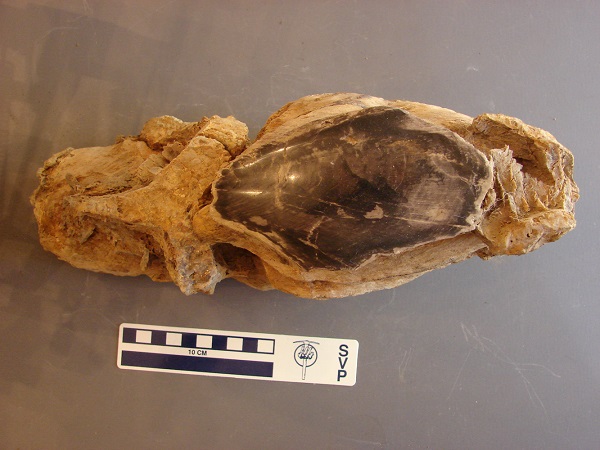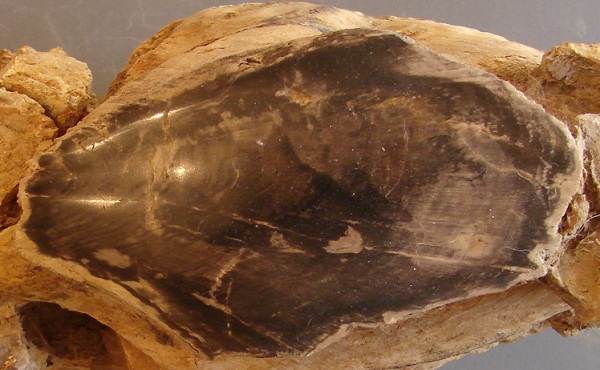Returning to our specimen from last week, this time from a different perspective:

Frankly, it still has a somewhat vertebra-like appearance, doesn’t it? Here’s a closer look at the polished surface, to help remove doubt.

As you are all probably aware by now, this is not an animal specimen at all, but a plant. Although it is a plant with a rather animal-like name: Archaeopteris. You can see that the wood was visually quite similar to that of modern trees, but this is an organism with a twist. Up until the 1960s, this specimen would have been identified as a fossil conifer named Callixylon that was often found near ferns of the genus Archaeopteris. Then the paleontologist Charles B. Beck found sufficient evidence to demonstrate that they were one and the same plant: a plant with unique characteristics linking spore-bearing ferns and seed-bearing gymnosperms.
We sometimes hear critics of evolutionary theory decry the lack of transitional forms in the fossil record, but we have a nice one right here. Archaeopteris was until just recently considered the earliest known tree, and combines the characteristics of woody trees and ferns. If you were to travel back in time 350 million years to see one, you’d think it looked a lot more like a modern tree than many of the other large plants of the period. These tree plants were big, growing up to ten meters in height, with some regularly measuring more than 1.5 meters in diameter. They branched like modern trees (many large tree-ferns of the period did not) and their foliage would not have looked particularly strange to us, kind of like a top-heavy Christmas tree. They were the first plants to produce a wide-spread root system, which had a big impact on the soil chemistry of the period. There’s even some evidence these plants shed their leaves seasonally. Yet, unlike modern trees, Archaeopteris did not bear seeds. Some of its fertile branches would bear spore capsules instead of leaves.
Not only are we looking at a transitional form in plant evolution, but a distant ancestor to the extant gymnosperms. As usual, plants are a great source of evidence for evolutionary theory.
The winner this week: Thomas Temme! Congratulations, and thanks for playing! If you have a fossil you want to share, send your pictures to me at schoerning at ncse.com

